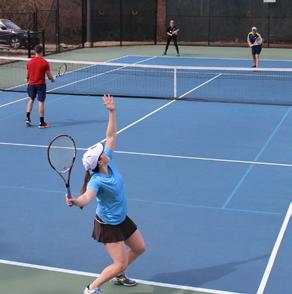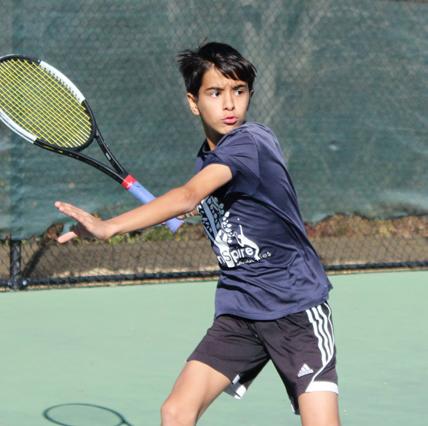
2 minute read
Finding Your Style
BY BILL ANDERSON, DIRECTOR OF TENNIS, CAPITAL CITY CLUB
Avery important learning tool as you evaluate where your tennis game can go is finding the playing style that works best for you. The best way to find your style is to ask your tennis pro fessional to assess various hitting zones with their feeds to see your natural swing come through. This evaluation is easy and may only take two or three lessons to dis cover, sometimes after one session.
Players of all abilities, heights, and ages tend to swing more consistently from a certain hitting zone. For example, a player who has a natural topspin (low to high) swing is likely to strike the ball better from a lower hitting zone just below their waist. In comparison, players who tend to hit flat, and have a more parallel to the ground swing, will enjoy the higher hit ting zones above the waist. There are two important factors to assess once you’ve found your playing style. n Strengths and weakness of each style n Court positioning to match your style
Once you’ve adopted a style, the sec ond step is to learn the positives and negatives in order to recognize how your ball affects your opponent and what potential risks your style poses. For example, a flatball hitter who drives through their ball from a high hitting zone has a greater risk of missing into the net. A topspin hitter, swinging low to high, has greater risk of missing the ball deep. Strengths can be looked at as well. Topspin players are able to push opponents back and play stronger angles, whereas flat-ball hitters do a bet ter job keeping the ball low and playing through the middle of the court in dou bles. Below are strengths and weakness of each style:
TOPSPIN STRENGTHS
Better angles Pushes baseline player back Great consistency Stays back and has longer points Stands behind the baseline
FLAT-BALL STRENGTHS
Lower ball to opponent Hits through the middle better Ends points early Approaches net more and shortens points Stands on or in front of the baseline
TOPSPIN WEAKNESSES
Miss more balls deep Can be poached more easily Stays higher to net player Prone to being attacked
FLAT-BALL WEAKNESS
Miss more balls into the net Restricts use of angles Stays low making net players hit up Limits the amount of court you can use
Another point of emphasis is court positioning to match your playing style. All players who use effective topspin and allow the ball to drop to the lower hitting zone will stand at least two to three steps behind the baseline. This positioning allows the ball to descend to the lower hitting zone so power and an upward motion can be achieved. Flat-ball hitters will look to stand on or inside the baseline moving/leaning into their shot as it rises to the higher hitting zone between the navel and shoulders.










